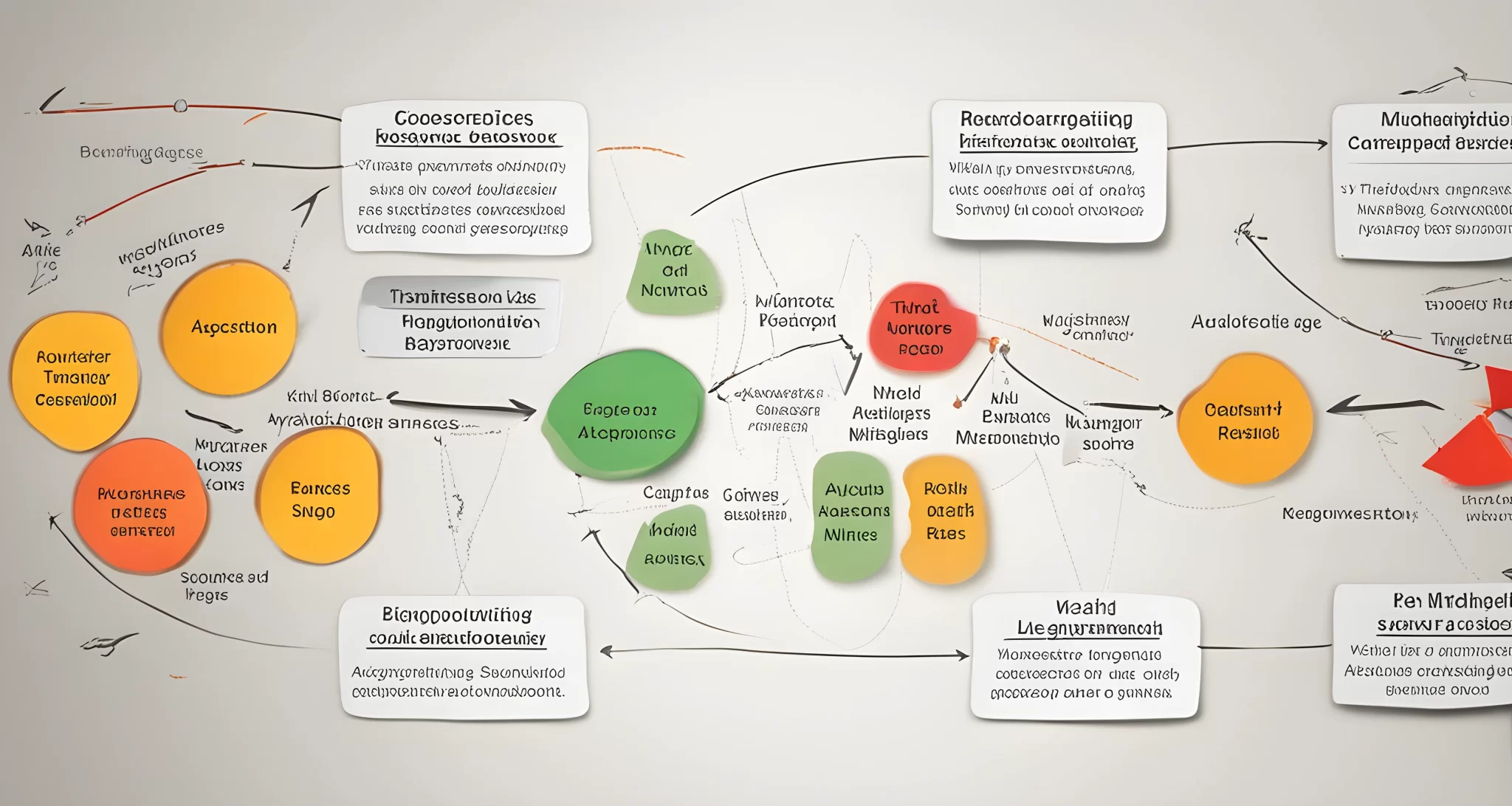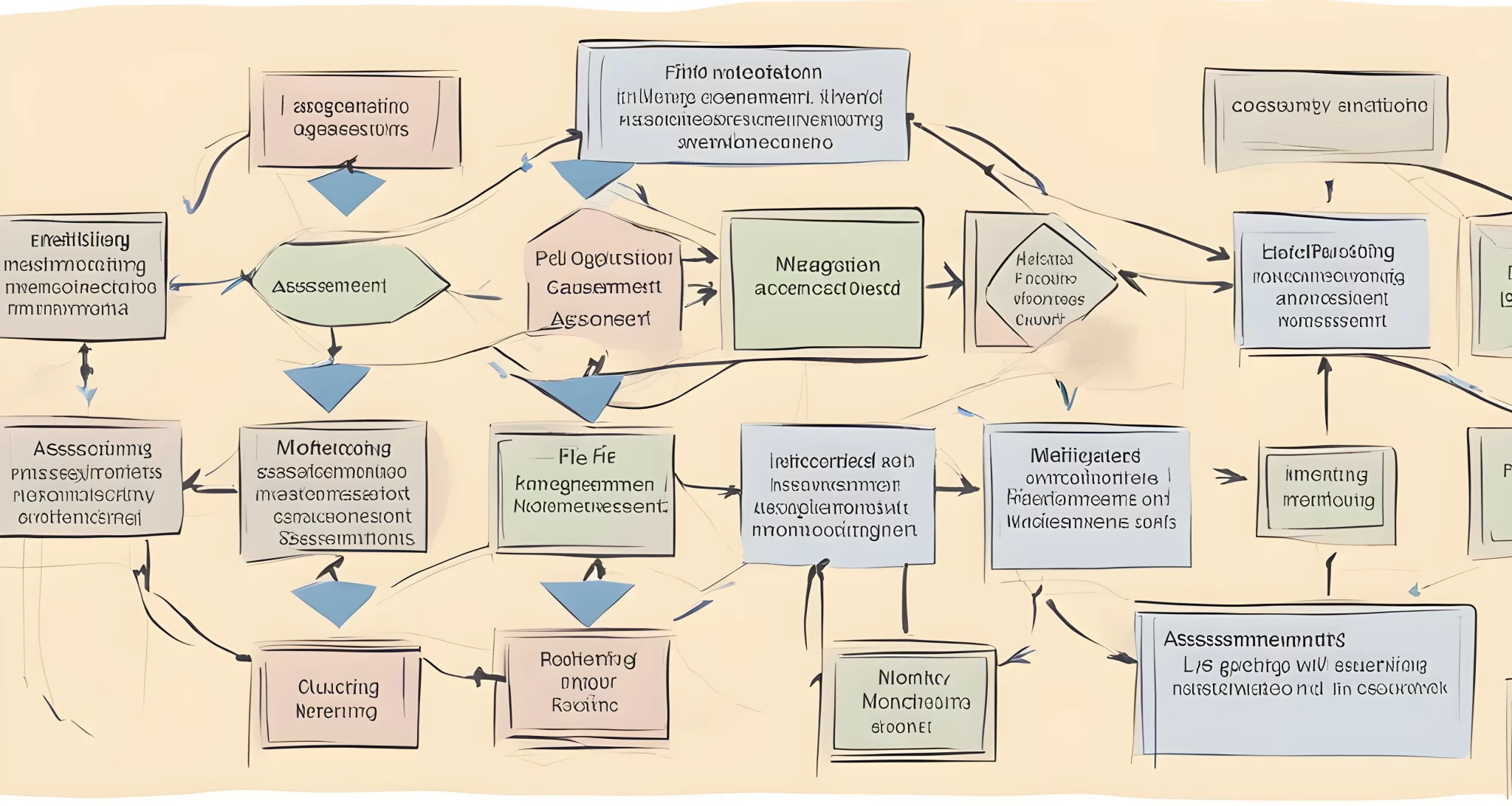Introduction to Risk Management
Risk management is a crucial aspect of any organization’s operations. It involves the continuous cycle of identifying, assessing, responding to, and monitoring risks. This proactive approach helps businesses and other entities prepare for potential threats, recover from them, and rebuild if necessary. In our article "Effective Strategies for Risk Management," we will explore the key components of risk management and how they can benefit organizations.
Understanding the Cycle of Risk Management
The risk management process begins with the identification of potential risks that could impact an organization’s objectives. These risks are then assessed to determine their likelihood and potential impact. Once risks have been identified and assessed, appropriate responses are developed and implemented to mitigate or manage them. Finally, the effectiveness of these responses is continuously monitored to ensure that they remain relevant and effective over time.
Importance of a Well-Defined Risk Management Strategy
A well-defined risk management strategy is essential for organizations to effectively navigate the challenges posed by various risks. By having a clear plan in place, organizations can improve their operational effectiveness, ensure business continuity in the face of disruptions, protect their assets, enhance customer satisfaction, achieve their goals, and ultimately increase profitability.
To learn more about specific strategies for managing risks in literacy programs, check out our article on Literacy program risk strategies.
Benefits of Effective Risk Management
Effective risk management offers numerous benefits to organizations. It helps them anticipate and prepare for potential threats, minimizing the impact of adverse events on their operations. Additionally, it allows organizations to respond more effectively to crises when they do occur and facilitates a quicker recovery process. Ultimately, effective risk management contributes to the overall resilience and sustainability of an organization.
In our subsequent sections, we will delve deeper into specific strategies for managing risks and explore common responses to various types of risks. By understanding these concepts, organizations can build robust risk management strategies that enable them to thrive in an increasingly complex and uncertain business environment.

Effective Risk Management Strategies
Effective risk management is crucial for organizations to protect their assets and maintain customer satisfaction. By implementing various strategies, organizations can effectively manage risks and achieve their goals while increasing profitability. The four common risk responses include Avoid, Transfer, Mitigate, and Accept. Each response involves different actions such as not exposing the risk, shifting it to another party, reducing its impact, or acknowledging and not mitigating it.
The choice of strategy depends on the specific risk and the organization’s tolerance for it. For example, if an organization has a low tolerance for a particular risk, they may choose to transfer it to another party through insurance or contractual agreements. On the other hand, if the risk is unavoidable, they may choose to accept it and not invest resources in mitigating it.
By implementing a well-defined risk management strategy, organizations can protect their assets and maintain customer satisfaction. This can lead to increased profitability and help achieve long-term business goals. To learn more about risk management in investment, check out Investment Risk Protection.
Overall, effective risk management strategies are essential for organizations to navigate through uncertain environments while minimizing potential negative impacts. It is important for organizations to continuously assess and update their risk management strategies to adapt to evolving business landscapes and emerging risks.
- Organizations can protect assets
- Maintain customer satisfaction
- Achieve goals
- Increase profitability
By leveraging the four common risk responses and choosing appropriate strategies based on their risk tolerance, organizations can effectively manage risks while positioning themselves for long-term success.

Common Risk Responses
When it comes to risk management, there are four common risk responses that organizations can take to address potential risks. These responses are crucial in developing a comprehensive risk management strategy that will protect the business from potential threats. Let’s take a closer look at each of these risk responses.
-
Avoidance: This response involves not taking any action that would expose the organization to the risk. For example, if a company determines that a particular investment carries too much risk, they may choose to avoid making that investment altogether. By avoiding the risk, the organization can sidestep any potential negative consequences.
-
Transfer: In some cases, it may be beneficial for an organization to shift the risk to another party. This can be done through purchasing insurance or outsourcing certain activities. For example, a company may transfer the risk of a data breach by purchasing cyber liability insurance. By transferring the risk, the organization can safeguard itself against potential financial losses.
-
Mitigation: Another common risk response is mitigation, which involves taking action to reduce the impact of the risk. This can include implementing security measures, conducting regular maintenance on equipment, or diversifying investments. By actively working to minimize the impact of potential risks, organizations can better protect themselves from harm.
-
Acceptance: Sometimes, after careful evaluation, an organization may decide to accept the risk without taking any specific action to mitigate it. This approach is often taken when the risk has a low chance of occurring or will have minimal impact if it does occur. By accepting certain risks, organizations can focus their resources on addressing more pressing concerns.
Understanding these common risk responses is essential in building an effective risk management strategy. Each response has its own benefits and drawbacks, and it’s important for organizations to carefully consider which response is most appropriate for each specific risk they face.
By incorporating these responses into their overall risk management strategy, organizations can better protect themselves from potential threats and position themselves for long-term success.
To learn more about effective strategies for managing risks in different areas such as Chat GPT Risk Management visit Chat GPT Risk.

Building a Risk Management Strategy
To build a successful risk management strategy, organizations need to follow a structured approach that allows them to identify, assess, respond to, and monitor risks effectively. By doing so, they can improve operational effectiveness, business continuity, asset protection, customer satisfaction, and ultimately achieve their goals while increasing profitability.
Identifying Existing Risks
The first step in building a risk management strategy is to identify existing risks that could impact the organization. This involves conducting a thorough assessment of potential risks across all areas of the business, including financial, operational, strategic, and compliance risks. By understanding these risks, organizations can develop strategies to mitigate their impact.
Assessing Likelihood and Impact
Once risks are identified, it’s essential to assess their likelihood and impact on the organization. This allows for a better understanding of which risks pose the greatest threat and should be prioritized for response. By using risk assessment tools and techniques, organizations can quantify the potential impact of each risk and determine the best course of action.
Responding to Risks
After assessing risks, organizations must determine how to respond to them. Common risk responses include avoiding the risk altogether, reducing the likelihood or impact of the risk, transferring the risk to another party (such as through insurance), or accepting the risk if it falls within the organization’s tolerance level. The choice of response will depend on the specific nature of the risk and the organization’s risk appetite.
Monitoring Risks
Lastly, a successful risk management strategy requires ongoing monitoring of identified risks to ensure that they are effectively managed over time. This involves regularly reviewing and updating risk assessments, tracking changes in the business environment that could affect risks, and implementing controls to mitigate new or evolving risks.
By following these steps and building a robust risk management strategy, organizations can achieve significant benefits such as improved operational effectiveness Effective Risk Management Strategy, business continuity, asset protection, customer satisfaction, goal achievement and increased profitability.

Benefits of Effective Risk Management
Effective risk management strategies can have a significant impact on the overall success of an organization. By implementing a well-defined risk management strategy, organizations can protect their assets, maintain customer satisfaction, achieve goals, and increase profitability. One of the key benefits of effective risk management is improved operational effectiveness. When potential threats are identified and addressed proactively, organizations can minimize disruptions to their operations and maintain a high level of efficiency.
Furthermore, effective risk management can also contribute to business continuity. By preparing for potential risks and developing plans to mitigate their impact, organizations can ensure that they are able to continue operating even in the face of unexpected challenges. This can help to build resilience and adaptability within the organization, ultimately leading to long-term success.
In addition, effective risk management can also help organizations improve their overall financial performance. By identifying and addressing potential risks, organizations can avoid costly disruptions and losses. This can lead to increased profitability and financial stability, as well as enhanced investor confidence.
Moreover, by implementing a robust risk management strategy, organizations can effectively prepare for, recover from, and rebuild after potential threats. This proactive approach not only minimizes the impact of risks but also allows organizations to bounce back more quickly and efficiently.
Overall, effective risk management is essential for organizations looking to thrive in today’s competitive business environment. It provides a range of benefits that contribute to the organization’s success, including protecting assets, maintaining customer satisfaction, achieving goals, and increasing profitability. By prioritizing risk management, organizations can improve their operational effectiveness, ensure business continuity, and ultimately enhance their overall success.
For more information on effective risk management strategies for consulting firms, visit Consulting firm risk control.
FAQ
What are the common risk responses?
The four common risk responses are avoid, transfer, mitigate, and accept. each involves different actions to address and manage potential risks.
How can organizations build a risk management strategy?
Organizations can build a risk management strategy by first identifying existing risks, assessing their likelihood and impact, and then responding to and monitoring these risks. the choice of strategy depends on the specific risk and the organization’s tolerance for it.
What are the potential benefits of effective risk management strategies?
Effective risk management strategies can lead to improvements in operational effectiveness, business continuity, asset protection, customer satisfaction, achieving goals, and increased profitability.
How can organizations protect assets and maintain customer satisfaction through risk management?
Organizations can protect assets and maintain customer satisfaction through risk management by implementing a well-defined risk management strategy, which can help in identifying, assessing, and responding to potential threats, ultimately leading to improved protection and customer satisfaction.
